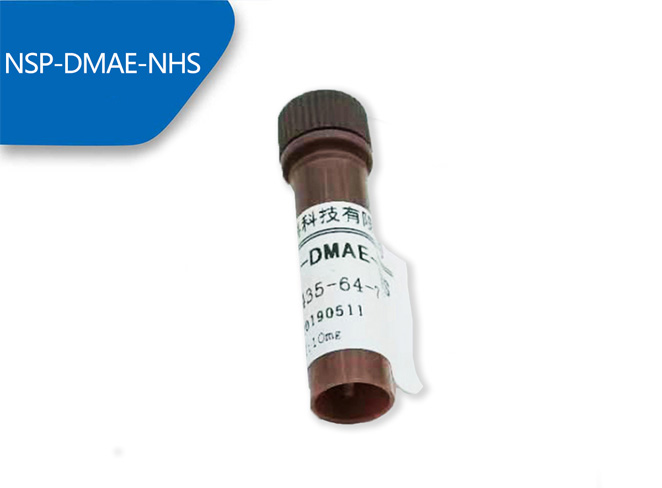NSP-DMAE-NHS CAS NO.194357-64-7

Product description
The CAS number of nsp dmae nhs is: 194357-64-7, and the molecular formula is C30H26N2O9S. It is a luminescent substrate reagent used in chemiluminescence experiments. Its parent is acridine ester. Many derivatives with different properties, acridinium ester NSP-DMAE-NHS is one of the more commonly used ones.
Acridine ester NSP-DMAE-NHS is an acridine derivative newly developed on the basis of traditional acridinium ester AE. It has high luminescence efficiency, good stability, can label various proteins or antibodies, and has high detection sensitivity. Less background noise.
Details of NSP-DMAE-NHS
Acridine esters are a class of direct chemiluminescent substances that do not require enzymatic catalysis reactions. In a specific solution, acridine ester molecules are attacked by hydrogen peroxide ions and a series of reactions occur. NSP-DMAE-NHS contains NHS active esters. , the label is directly coupled to it, and the acridinium ester NSP-DMAE-NHS has been widely proven to be an effective and easy-to-use chemiluminescent label.
NSP-DMAE-NHS Product Advantages
The NSP-DMAE-NHS luminescence system is simple and does not require catalysts, which can reduce background luminescence, improve sensitivity and reduce interference.
The NSP-DMAE-NHS luminescence system has high luminescence efficiency and high intensity, which has unique advantages over other technologies in the field of chemiluminescence immunoassay, usually five times or more than that of luminol.
The NSP-DMAE-NHS luminescence system has few interference factors, low background and high signal-to-noise ratio.
The molecular weight of NSP-DMAE-NHS is small, and it is easy to connect firmly with proteins through chemical bonds.

